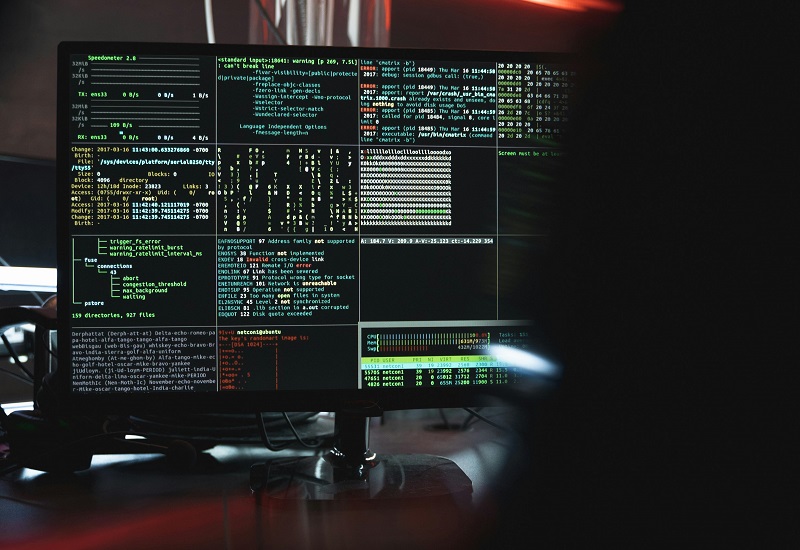Artificial Intelligence (AI-driven) cybersecurity is changing the way organizations detect and respond to threats. By enhancing threat intelligence, providing real-time response capabilities, and automating routine tasks, Artificial Intelligence (AI) enables organizations to stay ahead of cyber threats. However, it is essential to address the challenges and ethical considerations associated with AI to ensure its responsible and effective use. As AI technology continues to evolve, its role in cybersecurity will only become more critical, helping to create a safer digital landscape for all.
The Evolution of Cyber Threats:
Cyber threats have evolved significantly over the years. Hackers now use advanced techniques to bypass traditional security measures. These techniques include phishing, ransomware, and advanced persistent threats (APTs). Traditional cybersecurity tools, such as firewalls and antivirus software, struggle to keep up with these ever-evolving threats. This has created a need for more advanced and adaptive security solutions.
Understanding AI-Driven Cybersecurity:
AI-driven cybersecurity refers to the use of AI technologies to enhance threat detection, analysis, and response. AI systems can process vast amounts of data quickly and accurately, identifying patterns and anomalies that may indicate a potential threat. Unlike traditional systems, AI can learn and adapt over time, becoming more effective at identifying and mitigating threats.
Benefits of AI-Driven Cybersecurity:
The integration of AI into cybersecurity offers numerous benefits:
Improved Threat Detection:
AI can analyze large volumes of data at high speeds, identifying threats that might go unnoticed by human analysts. This leads to quicker and more accurate threat detection.
Enhanced Threat Intelligence:
AI systems gather and analyze threat data from multiple sources, providing valuable insights into emerging threats and attack vectors. This helps organizations stay ahead of cybercriminals.
Real-Time Response:
AI systems can respond to threats in real-time, reducing the time between threat detection and response. This minimizes potential damage and ensures faster recovery.
Reduced False Positives:
Traditional security systems often generate numerous false positives, overwhelming security teams. AI systems are more accurate, reducing the number of false positives and allowing teams to focus on genuine threats.
Predictive Capabilities:
AI can predict future threats by analyzing patterns and trends in historical data. This proactive approach helps organizations prepare for potential attacks and strengthen their defenses.
Automation:
AI automates routine security tasks, freeing up human analysts to focus on more complex issues. This improves overall efficiency and effectiveness.
Key Applications of AI-Driven Cybersecurity:
AI-driven cybersecurity is used in various ways to enhance threat intelligence and response. Some of the key applications include:
Behavioral Analysis:
AI monitors user behavior and identifies deviations from normal patterns. This helps in detecting insider threats and compromised accounts.
Malware Detection:
AI-powered systems can analyze files and code to identify malware, even if it has never been seen before. This is particularly useful in detecting zero-day attacks.
Phishing Detection:
AI can analyze emails and websites to identify phishing attempts. It can also educate users about potential phishing risks, reducing the likelihood of successful attacks.
Network Security:
AI monitors network traffic for suspicious activity, identifying potential threats and anomalies in real-time. This helps in preventing data breaches and unauthorized access.
Threat Hunting:
AI assists in proactive threat hunting by analyzing data and identifying potential indicators of compromise. This helps security teams identify and mitigate threats before they can cause significant damage.
Real-World Examples of AI-Driven Cybersecurity:
Several organizations are leveraging AI to enhance their cybersecurity measures. Here are a few examples:
IBM’s Watson for Cybersecurity:
Watson uses AI to analyze vast amounts of security data and identify threats. It provides actionable insights to security analysts, helping them respond to threats more effectively.
Darktrace:
This AI-powered cybersecurity company uses machine learning to detect and respond to threats in real-time. It monitors network traffic and identifies anomalies, helping organizations protect their data.
Cylance:
Cylance uses AI to prevent malware attacks. Its AI algorithms analyze files and code, identifying potential threats before they can cause harm.
The Future of AI-Driven Cybersecurity:
The future of AI-driven cybersecurity looks promising. As AI technology continues to evolve, its capabilities in threat intelligence and response will only improve. Here are some potential future developments:
Advanced Machine Learning Algorithms:
AI systems will become more sophisticated, using advanced machine learning algorithms to identify even the most subtle threats.
Integration with Other Technologies:
AI will be integrated with other emerging technologies, such as blockchain and the Internet of Things (IoT), to provide even more robust security solutions.
Increased Automation:
As AI becomes more advanced, it will automate more complex security tasks, further reducing the burden on human analysts.
Improved User Education:
AI will play a key role in educating users about cybersecurity risks and best practices, helping to create a more security-aware workforce.
Enhanced Collaboration:
AI systems will facilitate better collaboration between different security teams and organizations, sharing threat intelligence and improving overall security posture.
Challenges and Ethical Considerations:
While AI offers numerous benefits in cybersecurity, it also presents challenges and ethical considerations. These include:
Bias in AI Algorithms:
AI systems can be biased, leading to unfair or inaccurate threat detection. It’s crucial to ensure that AI algorithms are transparent and unbiased.
Privacy Concerns:
AI systems often require access to vast amounts of data, raising privacy concerns. Organizations must ensure that they handle data responsibly and comply with privacy regulations.
Adversarial AI:
Cybercriminals can use AI to develop more sophisticated attacks. It’s essential to stay ahead of these threats and continuously improve AI security measures.
Conclusion:
The digital world is spreading at an high rate, bringing with it a surge in cyber threats. Traditional cybersecurity measures often fall short in identifying and mitigating these sophisticated threats. This is where AI-driven cybersecurity comes into play. By leveraging artificial intelligence (AI), organizations can enhance threat intelligence and response, ensuring a more robust defense against cyber attacks. In this article, we will explore how AI-driven cybersecurity is revolutionizing threat intelligence and response, its benefits, applications, and future potential.








